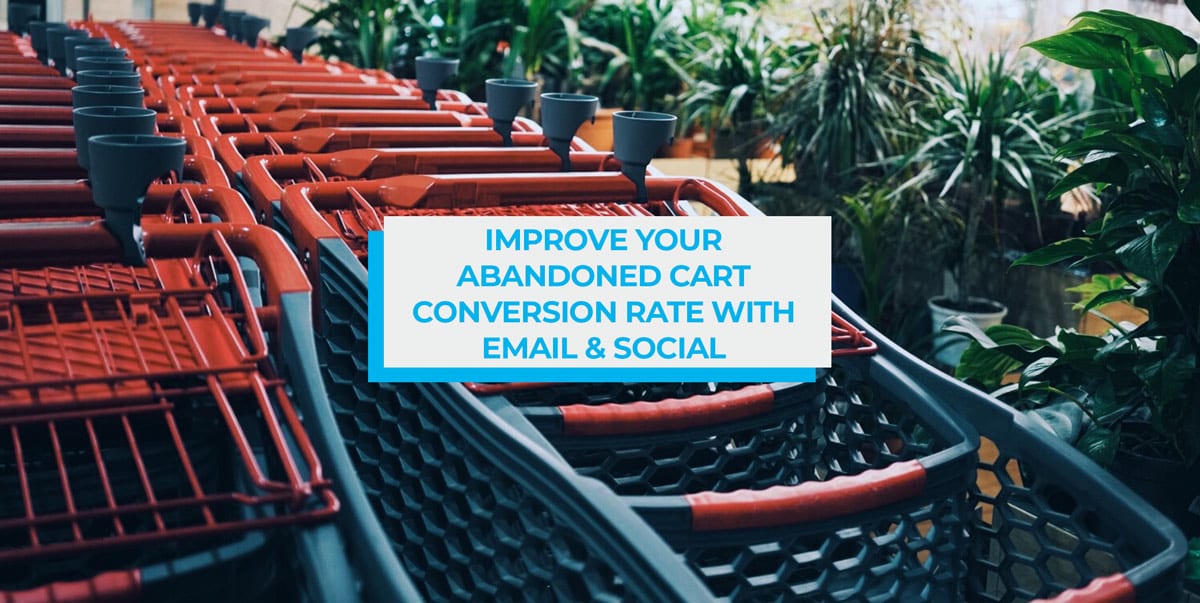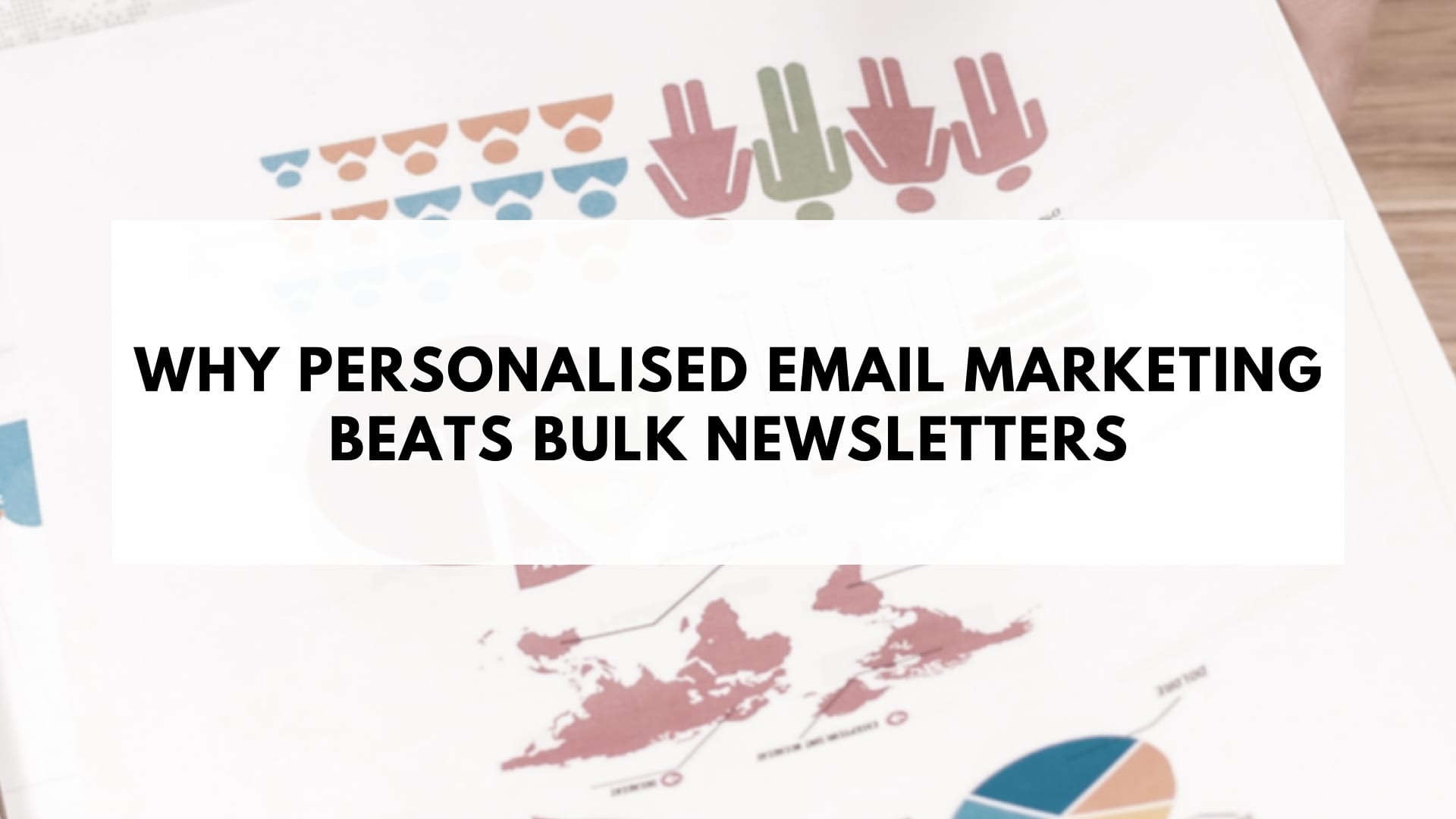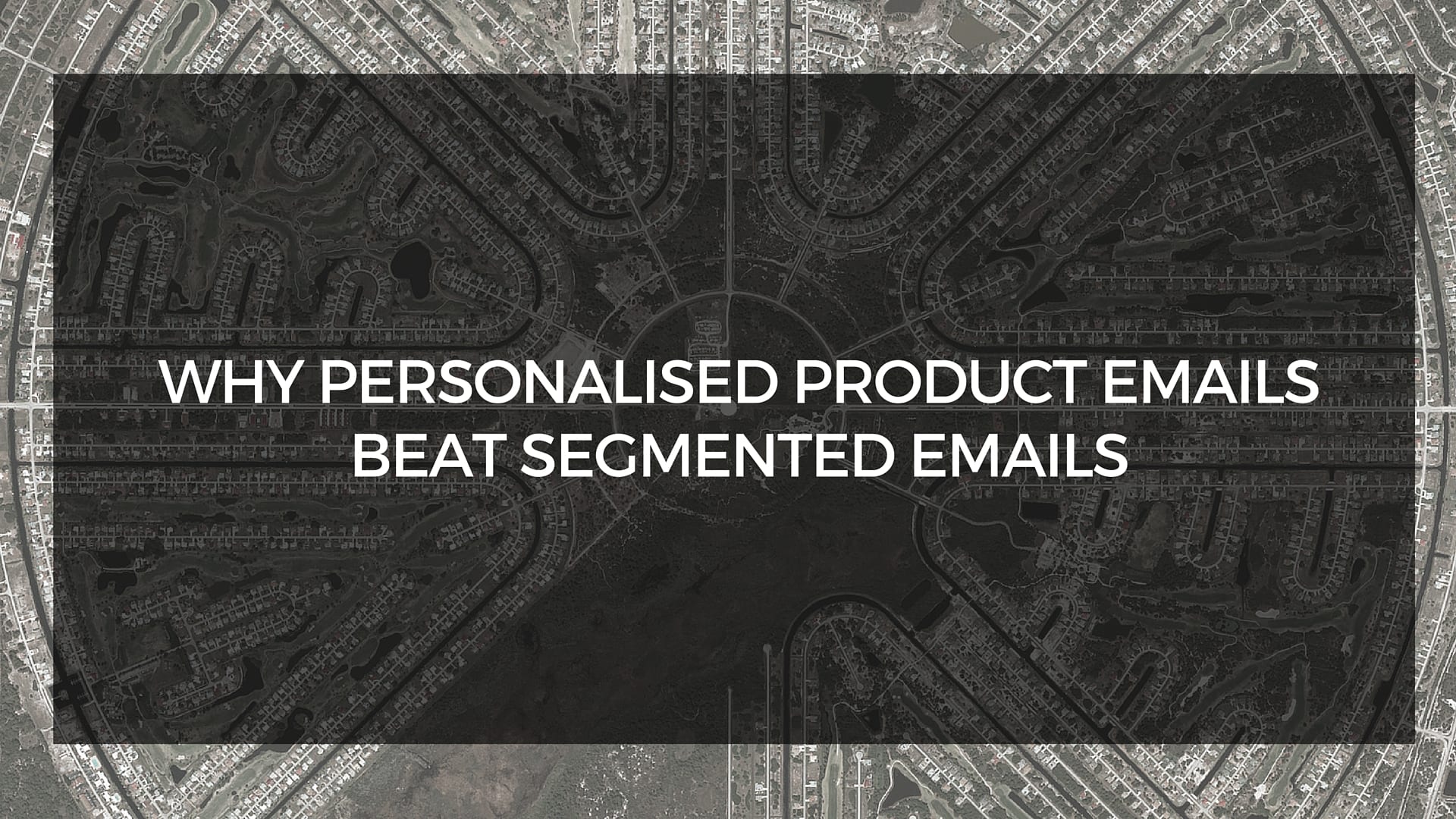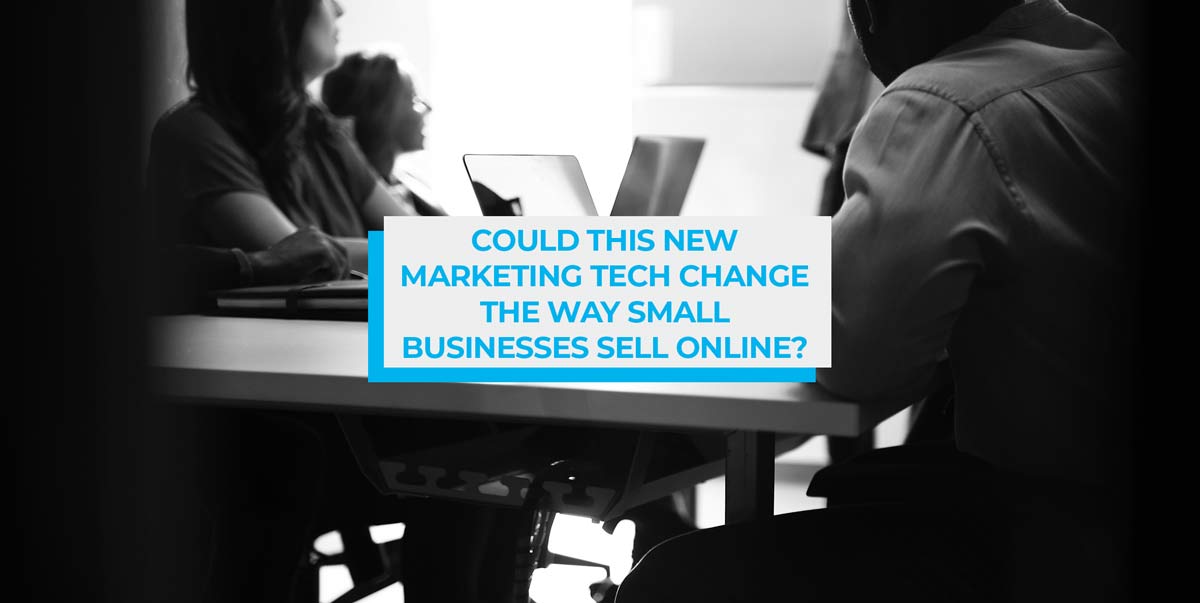They say Olympians who come in third are happier than those who place second.
Sounds weird, right? But it makes sense.
Coming in second is so close to winning. Those athletes will forever question themselves thinking “what if I just…”.
But the athlete in third, well, they’re just happy to place and get a medal.
The funny thing is, there’s a very similar instance of this in ecommerce.
When you first start out you’re happy with the smallest of successes. Be it a minor traffic bump, your first 1, 10, or 100 sales, or maybe that first big cross-promo.
But as you grow, being moderately successful isn’t enough.
You stop comparing yourself to the guys who make $1,000 – $10,000 / month and start shooting for the big leagues.
You start to see yourself at the head of a 7 or 8-figure store. The gold medal place.
I’ve seen it time and again. These store owners are more successful than 80% of ecommerce brands, but they’re also much less happy.
The question is, what is it you can do to help you generate more revenue? What’s the secret big stores have that help them grow to 7 and 8-figures per year?
While an Olympian is going to have to train like a MoFo for the next 4 years, you can start making up lost ground and gunning for that gold medal 7-figure+ store today.
Why Most Stores Never Get Gold
Some athletes just don’t have what it takes to get gold.
Not the case with ecommerce.
Every store can grow to become massively profitable. And honestly, most stores can see a decent increase to their bottom line by the end of the week.
How?
By recapturing the ~80% of carts that are abandoned.
I won’t bore you by going over the stats you, I, and every other commerce professional knows inside out and back to front in detail. But they do bear repeating.
SaleCycle’s 2018 report has cart abandonment reaching as high as 81%, with the average hovering around the 75% mark.
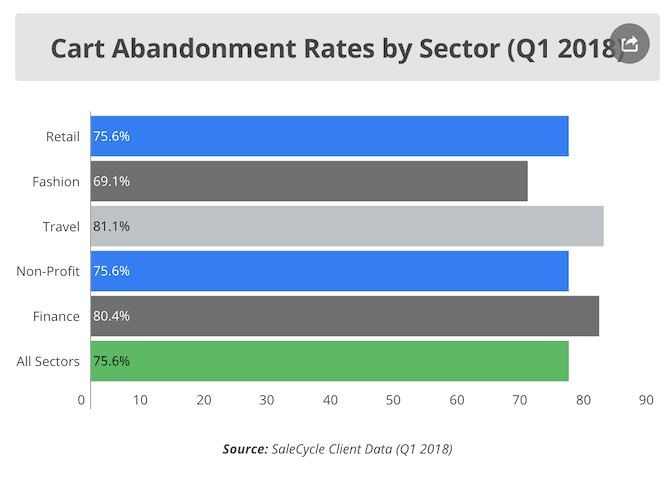
Out of every $5 that’s added to a cart on your store, only $1 makes it to your bank account.
Crazy, right?
That massive abandonment rate costs the industry $2-4 trillion per year in lost revenue. That’s trillion, with a T.
And not tackling it is why so many stores hit a revenue plateau early on.
The weirdest thing is, this isn’t a secret. We all know this is a big problem.
And, with the best of intentions, we all worked out what was causing the abandonment rate.
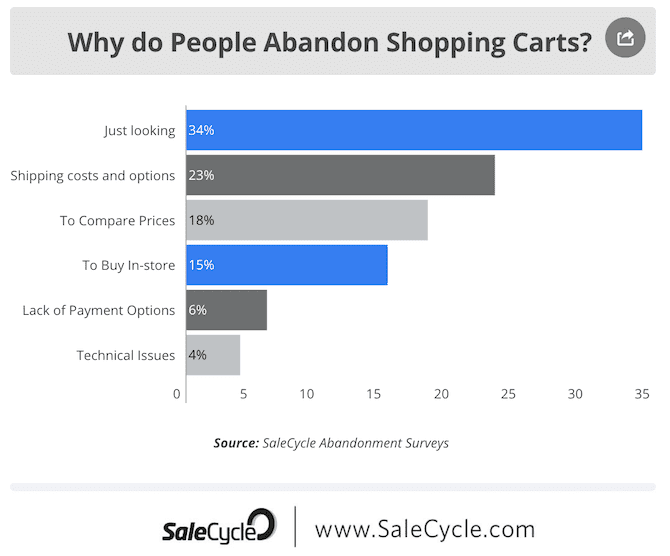
According to various studies, the main reason people abandon is because they were “just looking”.
I’m not saying the studies are wrong. I am, however, saying that the focus is wrong.
We’ve been seeing these studies for years now. Each one advising the same advice and outlining the same reasons for abandonment.
And yet, even after implementing the most logical fixes, the abandonment rate keeps on growing.
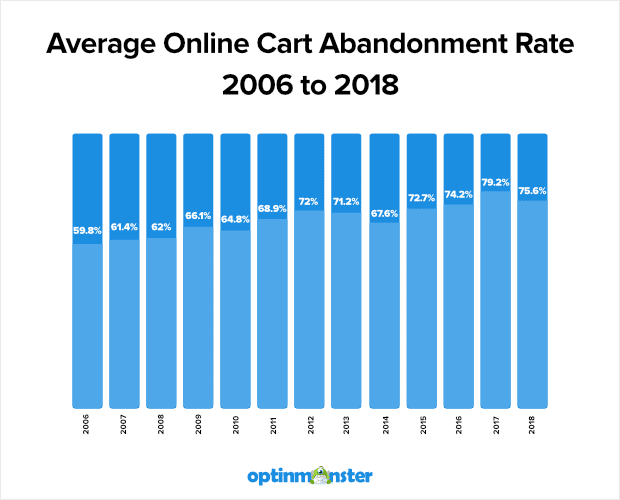
The advice isn’t working. We have to go right back to customer action to figure out why abandonment is so high.
The focus of the advice we’ve been following is wrong. Everyone is focusing on pricing, free shipping and other similar actions to “sweeten the deal”.
These were effective once. But very few brands aren’t doing this now. Meaning that offering a discount like free shipping is no longer a benefit but an expectation.
If you look at the online actions of most customers, the reason they don’t check out is because they’re distracted.
Let’s put it in real terms.
You’re looking for a new cushion set for your living room and sift through multiple designs, colors, sets, and sizes;
You see one set you like, so you add it to cart to save it for later.
But, you just want to make sure there’s nothing better out there so you head back to the main cushion page.
Here’s where it goes sideways.
You get distracted and pulled away from your search. It could be thanks to:
- Your boss walking past meaning you’ve got to get back to work
- Your train reaches your destination and you have to disembark
- The timer dings telling you your chicken is done
- Or anything else
Whatever the reason, you didn’t complete the purchase..
At no point was the brand responsible for the abandoned cart.
If they took the accepted advice and lowered shipping costs, included more trust signals, or anything else it wouldn’t result in you buying.
No, the issue was an external distraction.
So what’s the solution to that?
Well, it’s all about reminding the customer of the product they were so close to being ready to buy.
The customer has given you a huge signal by adding something to their cart. You, as the brand, need to follow up on that interest.
And the most effective way to do that is with a comprehensive cart abandonment message solution.
The One-Two Punch of Effective Cart Abandonment Solutions
OK, so you’re likely familiar with the most popular of cart abandonment solutions.
Email marketing.
I know from experience that email is one of the most effective methods of driving revenue gains.
I mean, it gets a whopping 38:1 ROI.
There’s a bunch of really awesome articles here on SmartrMail which will help you improve the effectiveness of your cart abandonment emails.
You’ll find everything from how to write better messages, how to space and send your emails, and of course the ever useful examples of top performers.
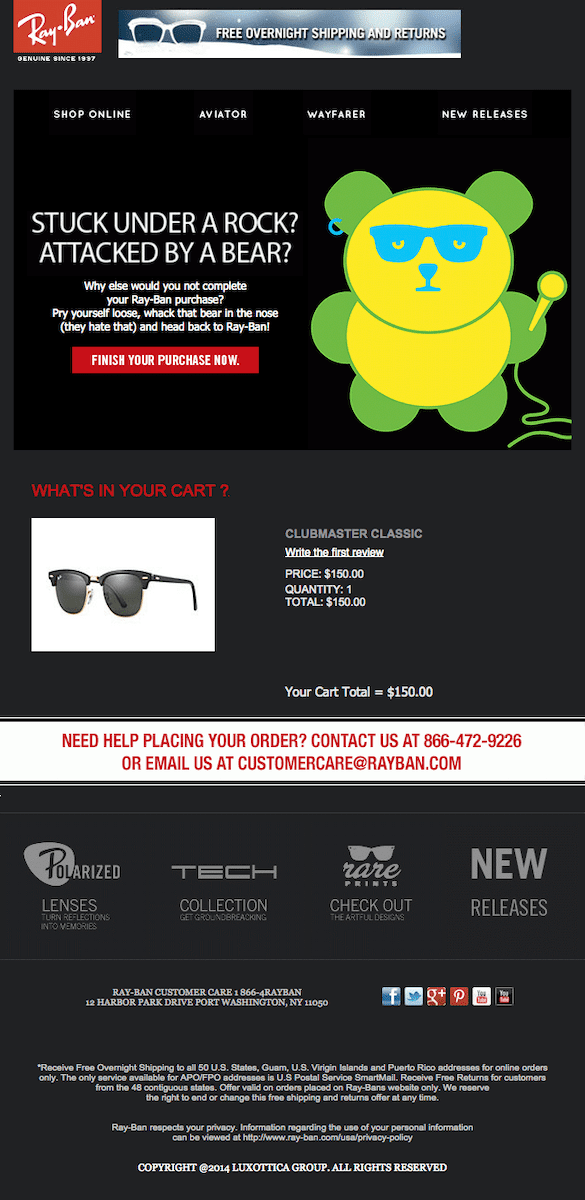
Email is one of the best ways for you to re-engage abandoners and bring those people who were simply distracted back into your sales funnel.
However, as much as I love email as a channel, it has a couple of fundamental flaws.
First, the channel has been saturated with marketing promotions. People are skeptical of anything they get from brands (perhaps thanks to a very prolific Nigerian Prince…).
We’re so used to getting (and ignoring) sales pitches that they barely stand out anymore.
The copy guide I linked to above will help you stand out from the crowd in this sense.
One of the results of this saturation is the creation of features and services from email services to help you filter and sort promotional emails.
Most of the emails that are hawking goods or pushing for a sale (like cart abandonment messages) will fall into the promotions tab.
This has led to a lowering of open rates and click through rates.
So what should you do?
Sending more messages isn’t necessarily going to increase engagement.
What we’d recommend is also pursuing cart abandonment through a secondary channel. One which also provides a 1:1 level of communication and also allows for direct purchases.
The channel in question is Messenger.
Messenger is getting insane open and click-through rates. Recart ran the numbers and found that Messenger can be more effective than email for cart abandonment.
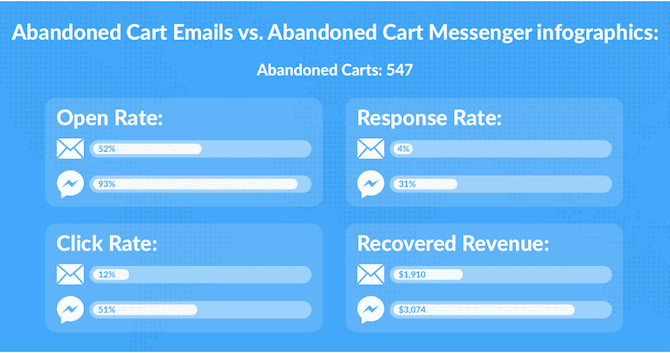
There’s great potential there. And if you can add a checkout to your cart abandonment messages you can have people check out and purchase directly from the Messenger conversation.
With a tool like Jumper it’s incredibly easy to set this up.
There’s an in-built function for cart abandonment which will follow up on abandonments with messages like the below.
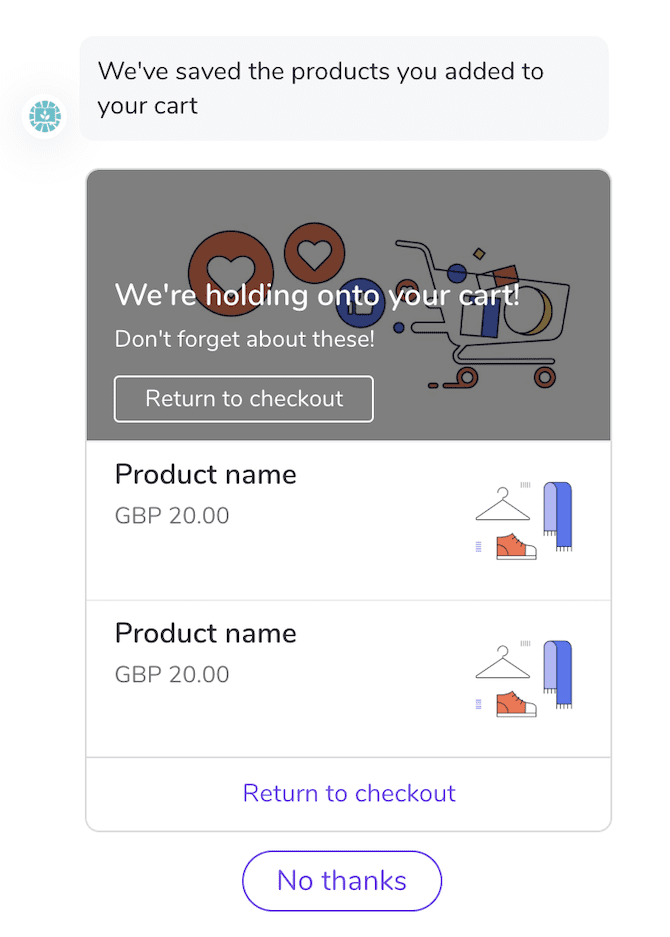
Thing is, people see the stats from brands like Recart above and think that they should place all of their attention on Messenger and ignore email.
This is not the case.
How and Why to Use Messenger and Email Together
You shouldn’t limit yourself to a single channel in any marketing strategy.
Email and Messenger aren’t battling for the top spot in cart abandonment. They’re partners, and you’ll get the most out of them when you use them together.
Some customers prefer email, some prefer Messenger. If you limit yourself to one, you’re cutting out the potential profits of the other.
However, there’s a few tips to using them together properly.
Understand Messenger Specific Rules
One of the reasons email is so popular is because you own the list.
If you want to email everyone 5+ times per day you can. If you want to send nothing for a month then send a promo, it’s not a problem.
Messenger, on the other hand, is owned by Facebook. And they’ve imposed a number of rules to prevent users being spammed.
The only one that’s really important for this is the 24+1 rule.
In short, you can send promotional messages to users for 24 hours after they’ve engaged with your brand.
That means 24 hours after abandonment.
The +1 means you get 1 more promotional message after that 24 hour period. Here’s a detailed breakdown of the information.
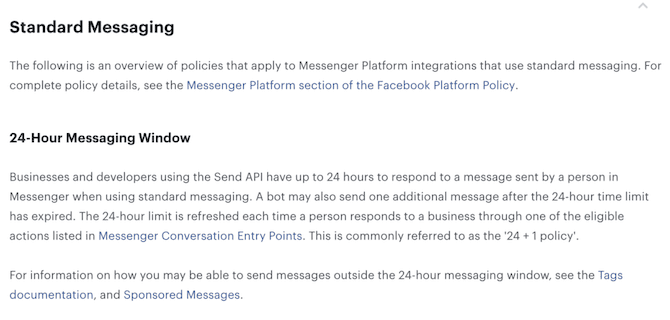
If you break these rules you run the risk of getting your account banned.
So, keep your abandoned cart messages within a 24 hour period through Messenger.
Which leads us to our next point.
Refine Send Times Across Channels
As mentioned above, your email list is to do with what you please. And there’s been a lot of research into the best time to send abandoned cart emails.
Adding Messenger into the mix kind of confuses the process though.
You’re adding another point of contact into the mix.
You could simply double up on sends and send messages at the same time as emails.
People who prefer one channel over the other likely won’t know.
However, a big portion of your audience will be using both channels and this could lead to missed messages and lowered impact.
What I’d recommend is to stagger the messages you send across networks to increase the chance you stay top of mind.
For example, sending an initial abandonment message 1 hour after abandonment. Following that with an email at 2-4 hours after.
With this method, you can ensure you’re staying in constant contact through various means.
Reduce Email Messages Down
Messenger is a different channel, and yes, it comes with its own rules for effective copy.
But that doesn’t mean you should be starting from scratch again.
Far from it.
If you’ve got an email series which is driving a ton of sales, adapt it to Messenger.
Use the same message but cut it down in length and make it more conversational.
Use what’s working and adapt it to fit the channel.
You know it works, so simply make it accessible to everyone.
Test, Test, Test
Beyond that, it’s going back to basics for marketing and testing everything as thoroughly as possible.
Always run a test to see what works best.
This is going to be more difficult than your regular A/B tests of headlines as you’re going to have to compare the sales and success rates of cart abandonment as a whole across two complementary channels.
How you approach the testing is up to you.
The only advice I would say is an absolute must is to keep a solid focus on the macro.
In this case, that’s going to be sales, recovered carts, and revenue.
Cart Abandonment Just got More Effective
There’s a lot of talk about Messenger at the minute.
It’s once again reignited the talk of “email marketing is dead”. Which, to be honest, is BS.
Email marketing will never die in my opinion.
Messenger might be more effective in some areas, but email will still remain champion when it comes to overall ROI.
The smart commerce brands of tomorrow, the stores earning crazy money, will be those who are leveraging both channels.
They’ll have linked them together to increase their reach and the impact of their messaging.
Cart abandonment is one of the first areas where you can properly integrate the two.
And if you’re missing the Messenger component, head over to Jumper.ai to get your first abandonment campaign up and running today.
——
Pete Boyle is founder of have-a-word and Head of Content at Jumper.ai – the most effective social commerce solution that works with every social media platform.

